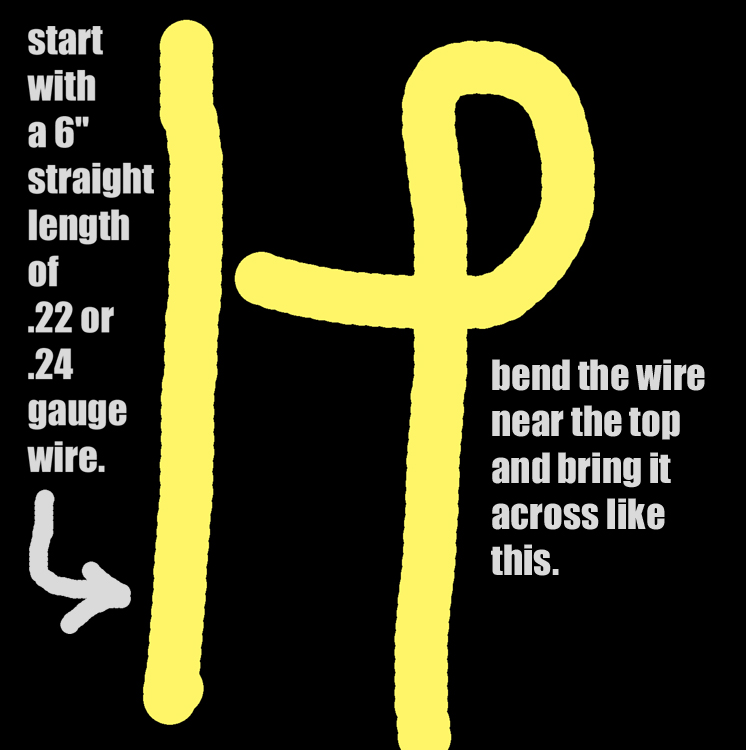
The first choice comes when you select two stones for your Hellenistic earrings. Try the .22 gauge wire first. Gently push the wire through the drill-hole in the bead to see if it will work. If EITHER bead is reluctant to accept the .22 gauge wire, switch to the much thinner .24 gauge wire.
The Greeks, Romans, Egyptians, Sumerians and Babylonians were incredible builders and engineers. This earring depends upon a bridge-engineering discovery they made many tens of thousands of years ago, that translates into bead technology as: a vertical wire will support a bead better than a horizontal wire.
Bend one end of a 6″ length of .22 or .24 gauge wire into a loop, crossing the main wire with a tail that leaves enough room to make three or four full winds around the wire where the loop will close.
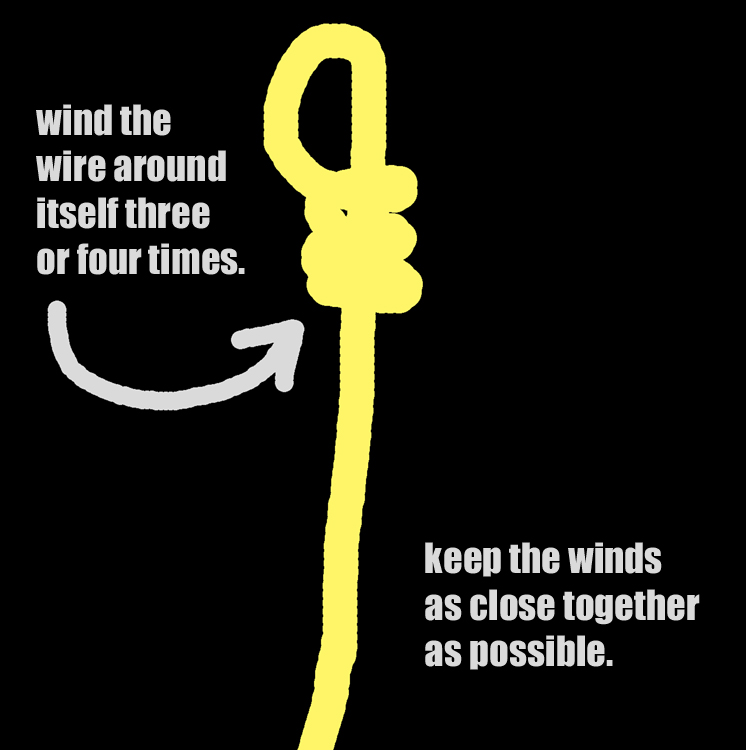
Wind the wire around itself three or four times, and flush-cut the end where it will not cause trouble. Clean up any sharp points now, not later when you can’t reach them.
Keep the winds as close together as possible, to create the best effect. Hellenistic goldsmiths were amazing, and totally precise, so keep that in mind when working on this pair of earrings.
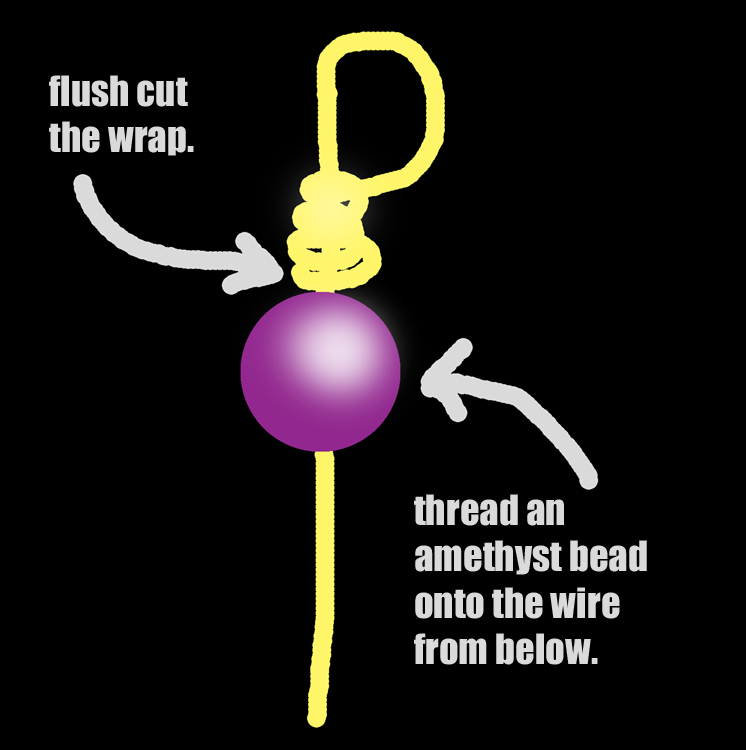
Thread one of your amethyst beads onto the wire from the open bottom of the wire. Hold it in place with your fingers as you work on closing the bead element.
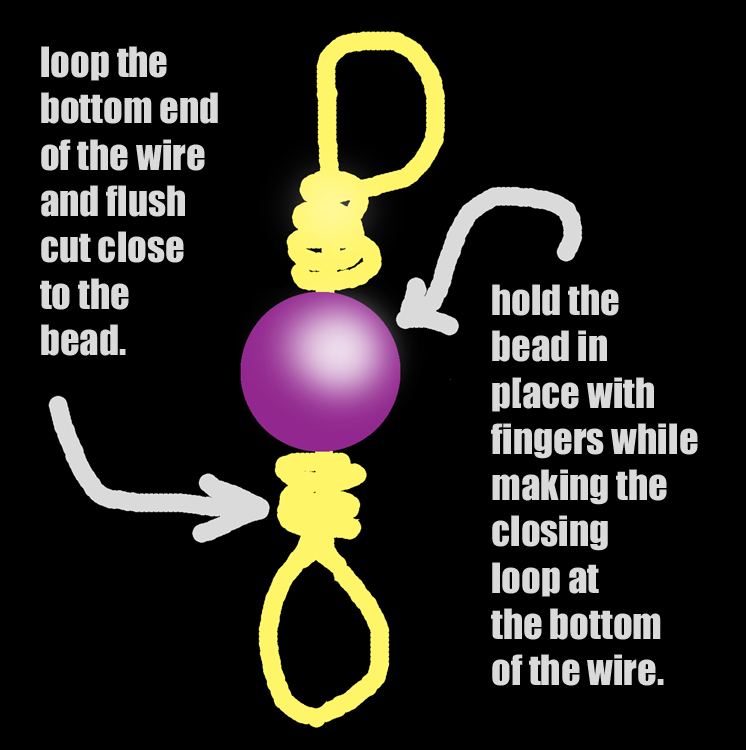
Wind the second loop at the bottom, flush-cut as close to the bead as possible without damaging anything, and if necessary, buff & polish the ends of the wire that remain sharp.
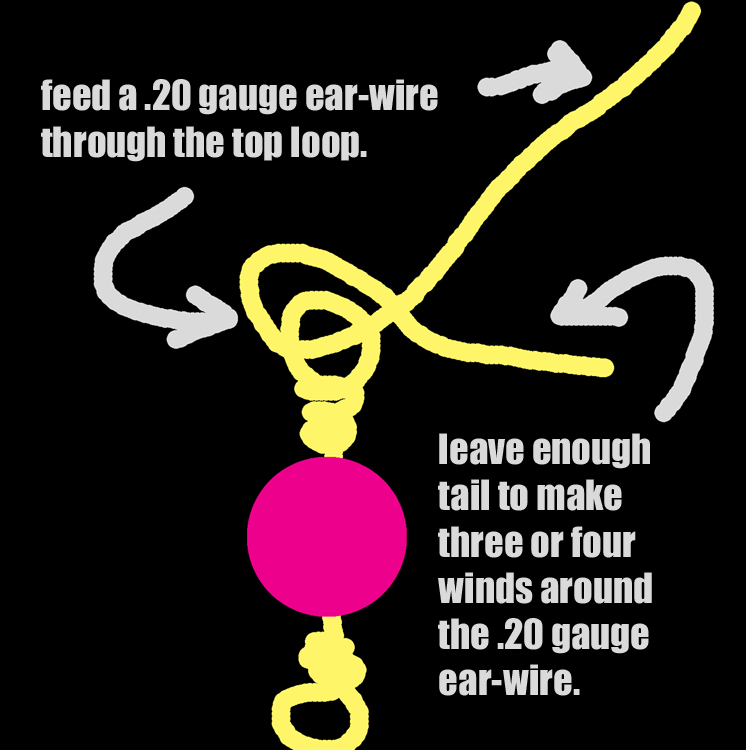
Thread the thicker .20 gauge wire through the top loop of the bead element, leaving enough tail to make three or four winds around the .20 gauge wire.
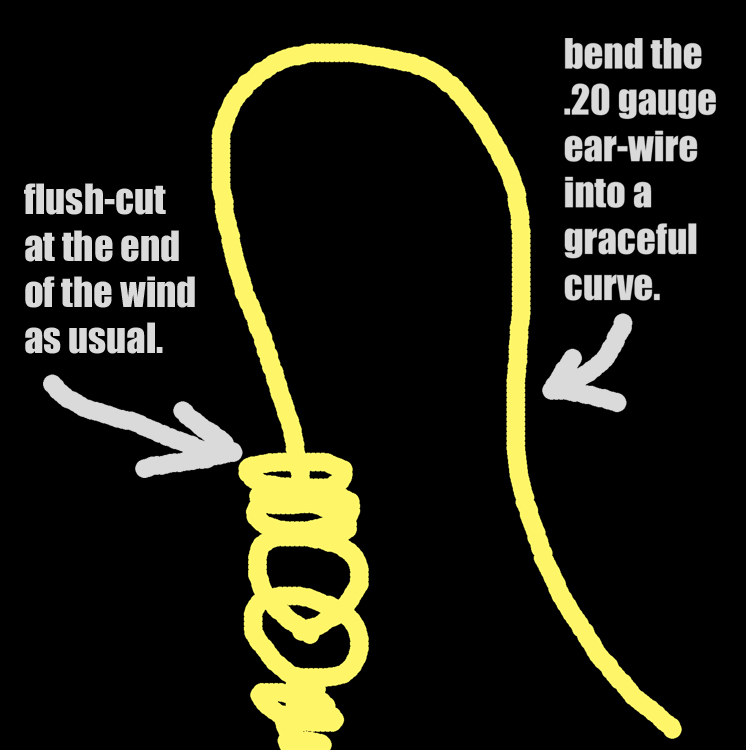
Flush-cut the wire at the end of the wind, and bend the .20 gauge ear-wire into a graceful curve. You can bend the wire slightly upward at the tip if you wish — that’s optional.
Add your hammered paddles (see chapter on how to make paddles) and buff as necessary to eliminate sharp points and edges, taking care not to allow the buffing wheel to touch the amethyst stones.
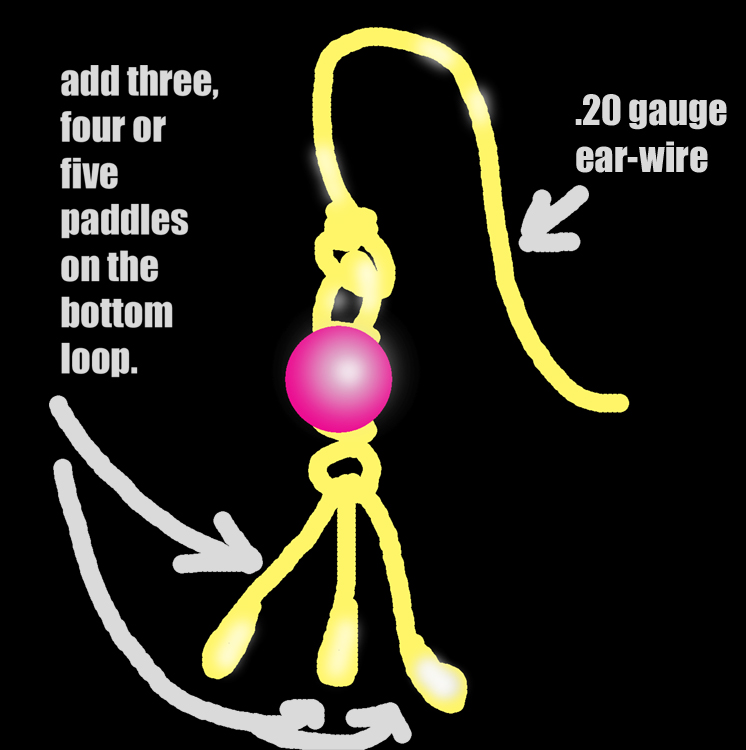
The paddles are added to the bottom loop of the gemstone element, then just buff and polish and hand polish as usual. You can dress up your Hellenistic earring set with the addition of two fancy metal beads.
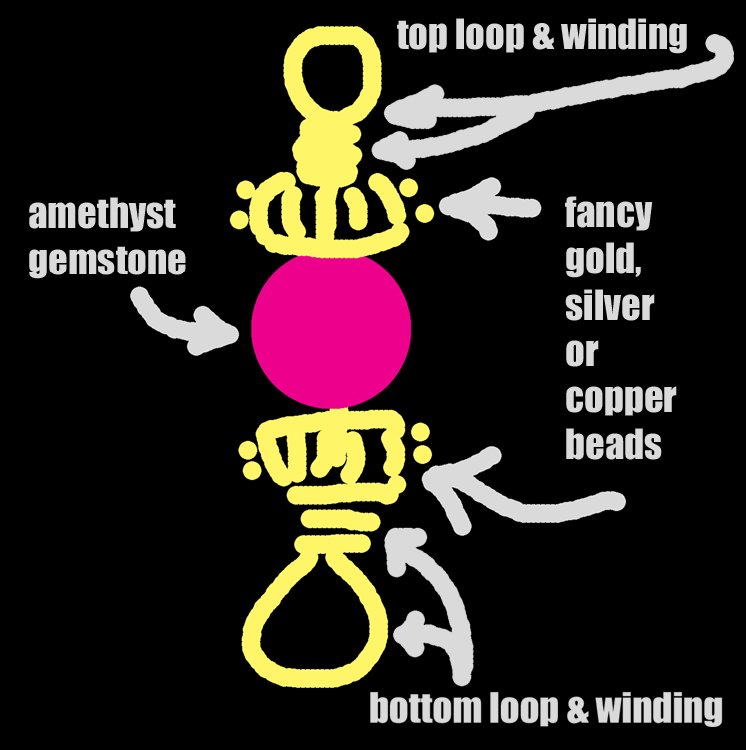
You can add fancy metal beads, gold, gold-filled, silver, copper, bronze or iron. Simply thread one fancy metal bead onto the wire BEFORE you put the amethyst on, then another one AFTER you put the amethyst on, then close the bottom loop as usual, and finish in the usual manner, adding your ear-wires, paddles, etc.
Be judicious in your choice of additional weight to the earrings, keeping in mind that modern lobes are generally not conditioned for heavy gold, bronze and silver earrings such as those worn by the ancient Greeks.
Bronze and silver jewelry did not typically survive into the 21st century, because they are much more subject to oxidation than gold, and pure gold doesn’t oxidize — ancient gold looks about the same as the day it was made, except for a thin film of age, detectable under a 40x power loupe. Never clean ancient jewelry, unless you want to be responsible for the destruction of the natural patina, the result of burial for many thousands of years.
I have on hand ancient Hellenistic gemstones and glass beads, which you will be able to purchase from me if you wish. Otherwise, you can use any amethyst beads you happen to find at your local bead shop.
If your town doesn’t feature a bead shop, you might consider opening one.
See You At The Top!!!
gorby

